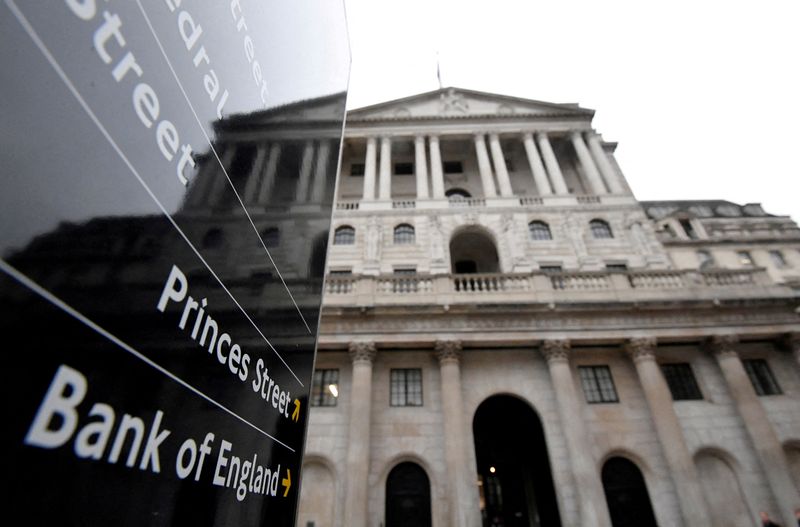Investing.com -- The Bank of England left its benchmark interest rate unchanged at 5.0%, with officials stating their desire to take a gradual approach to possible future policy easing following a rate cut last month.
Economists had widely expected the decision, particularly after UK consumer prices came in at 2.2% on an annual basis last month, close to the bank’s medium-term target, but services inflation was running hot at an annual 5.6%. Price gains in the services sector are seen as a key data point for the BoE.
The announcement comes a day after the Federal Reserve slashed interest rates by a super-sized 50 basis points on Wednesday and indicated that it would announce further cuts this year, with Fed Chair Jerome Powell stating that there is "growing confidence" around the outlook for US inflation. The European Central Bank also reduced borrowing costs for the second time since the COVID-19 pandemic last week.
Yet the prospect of potentially sticky services inflation in the UK has led many forecasters to bet that the BoE will move slower than its counterparts to roll out rate cuts. Other indicators of price pressures have been mixed. Wage growth, a major metric watched by the BoE, has cooled and the broader economy stagnated in July.
In August, the BoE lowered rates down from a 16-year high of 5.25%.
According to a statement, policymakers found that there had been "limited news" in British economic indicators relative to the rate-setting Monetary Policy Committee's prior projections in August. At the time, the BoE warned that the "risks of higher inflation remain," adding that they expect price growth to accelerate again in 2024.
"In the absence of material developments, a gradual approach to removing policy restraint remains appropriate. Monetary policy will need to continue to remain restrictive for sufficiently long until the risks to inflation returning sustainably to the 2% target in the medium term have dissipated further," the BoE said. It added that it will decide on the "appropriate degree" of policy restrictiveness on a meeting-by-meeting basis.
